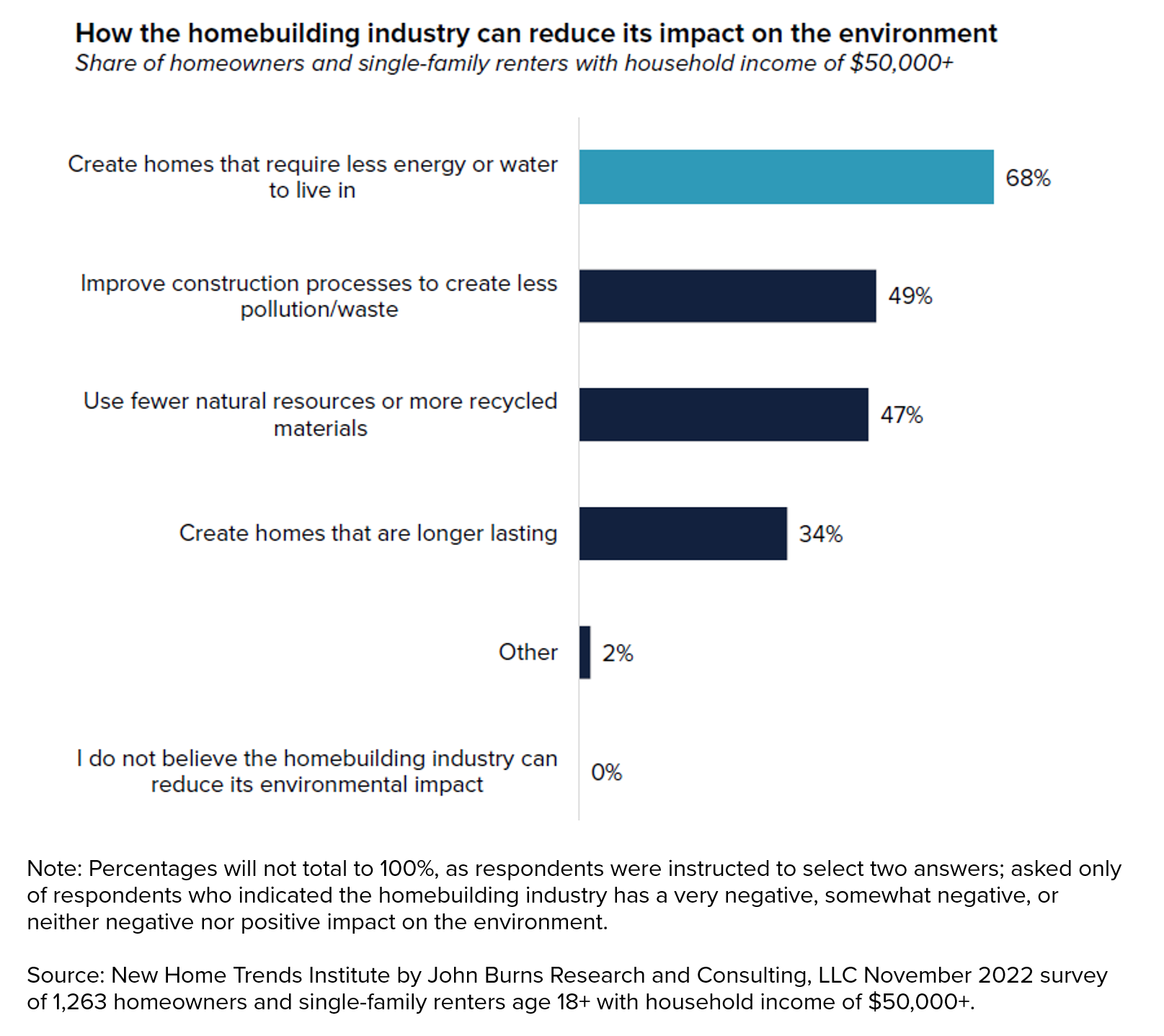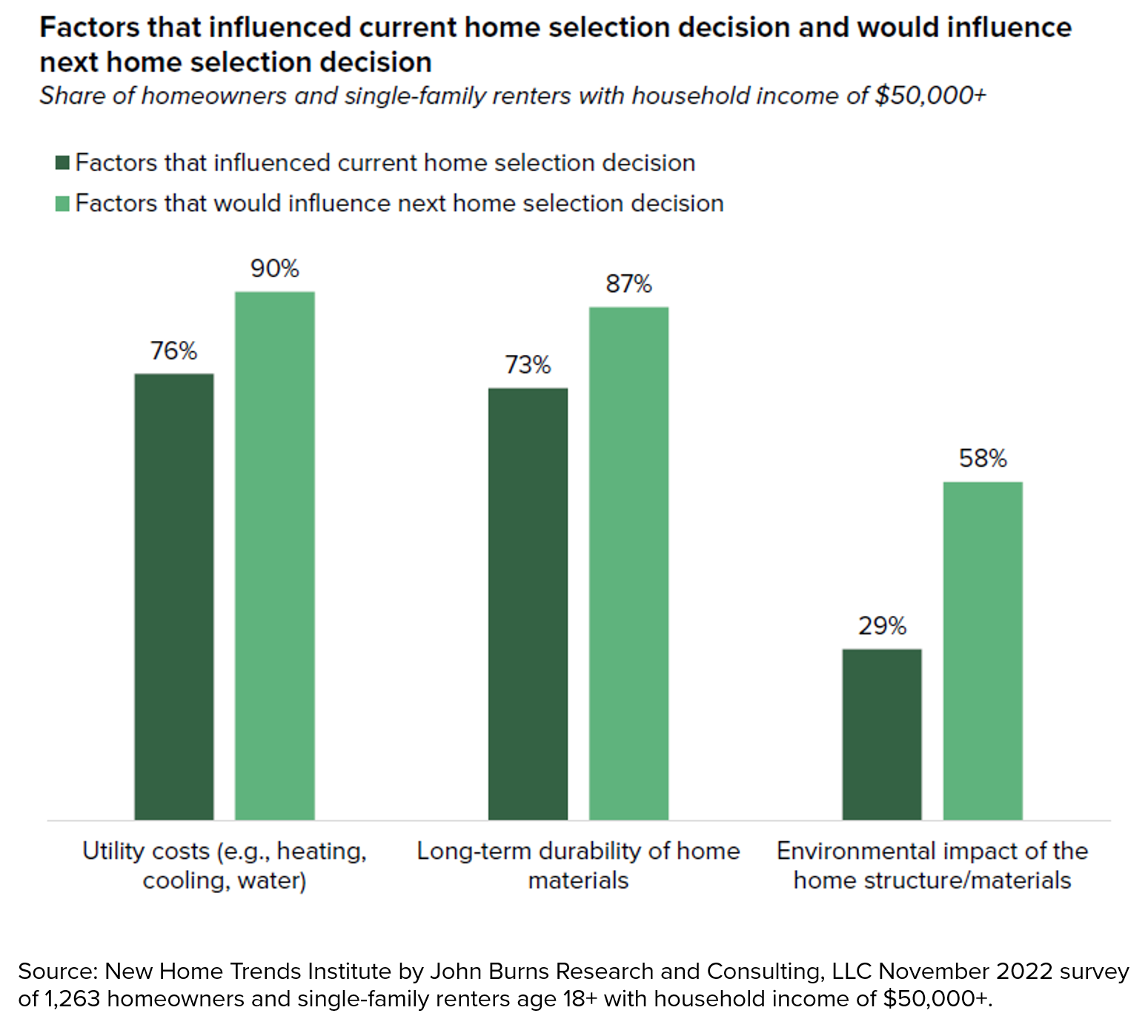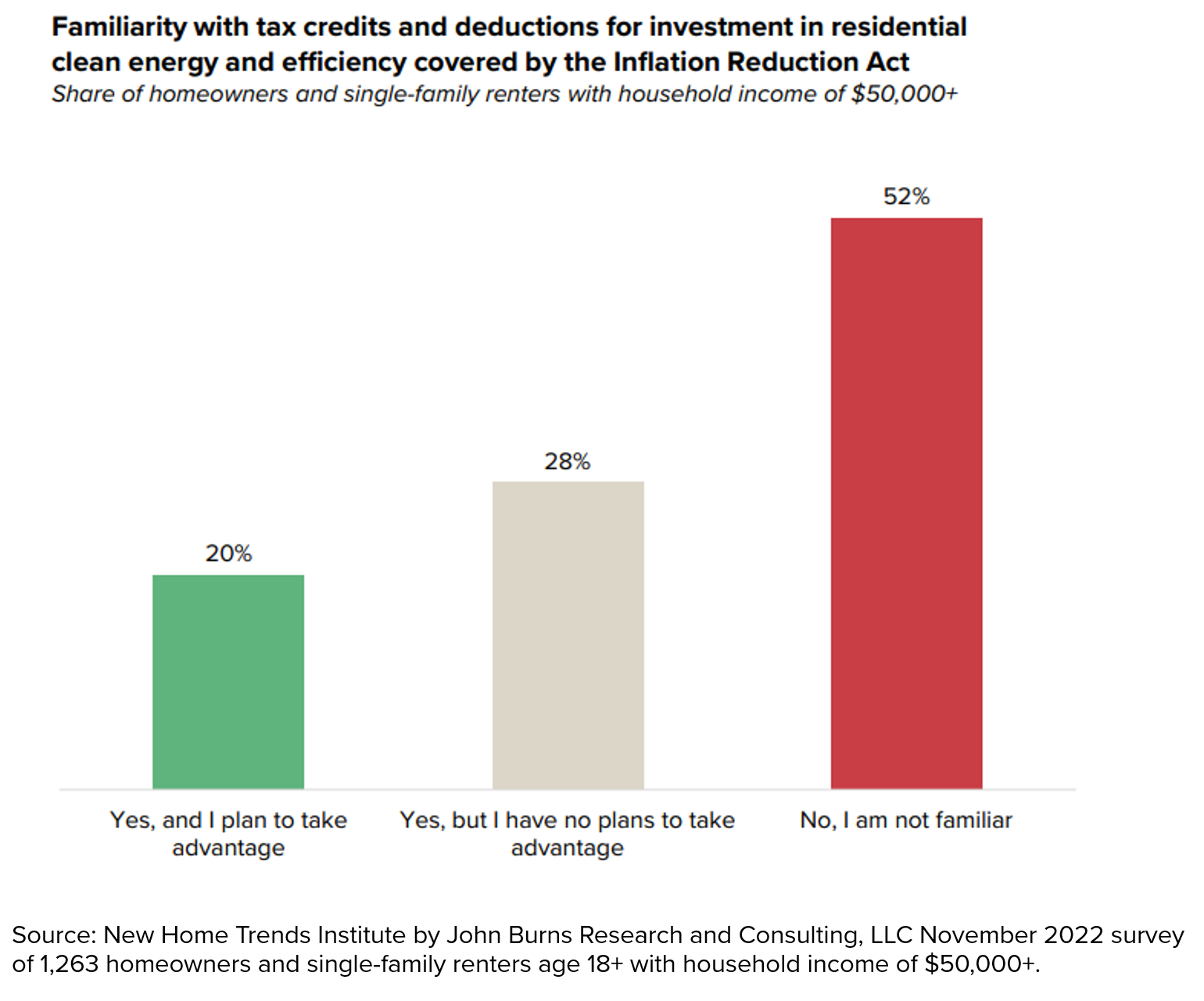Most of us can agree that sustainability matters to consumers, but not all high-performance home features matter equally. The housing industry has yet to see home buyers and renters put their money where their mouths are when making sustainable choices. We consistently find that, to sell sustainability successfully, it’s essential to demonstrate what’s in it for consumers. Whether you’re new to the high-performance market or an esteemed green veteran, here is what you should keep, stop, and start doing to market greener living to consumers.
Keep marketing what you build versus how you build it.
Consumers believe that improving the end product—homes with lower energy and water requirements—positively impacts the environment more than attempting to improve the construction process by reducing pollution, waste, or material usage. Consequently, marketing the home’s high performance will resonate more than highlighting improvements to construction practices.
What is the most impactful eco-friendly adjustment to the home? Most consumers say lowering their electricity consumption, though reducing their carbon footprint is also a growing consideration; 54% say the latter matters just as much.¹

Stop assuming sustainable choices are motivated by concern for environmental impact.
Though awareness of environmental impact has increased, at the end of the day, utility cost savings and durability matter most. The environmental impact will be considered twice as often in future home selection decisions—a factor for 58% of homeowners and single-family renters—but it remains well below utility costs (90%) and long-term durability (87%). For consumers, green is good—as long as it means they’re saving money.

Start educating consumers about opportunities to offset the cost of high-performance homes.
The return of Bed Bath & Beyond (Thanks, Overstock.com!) and their famous coupons isn’t the only good home-savings news: thanks to the federal government, consumers can save money on green additions and upgrades. The Inflation Reduction Act is prompting one in five consumers to make energy-related home improvements, like installing solar panels and energy-efficient windows.
Yet opportunities abound to educate consumers about clean energy tax credits and deductions: 52% of consumers are unfamiliar with the tax credits and deductions for investment in residential clean energy and efficiency covered in the Inflation Reduction Act. With cost savings top of mind for consumers, this could be the time to get them to think differently about high-performance homes.

For even more insights, complete this form to learn about becoming a New Home Trends Institute member.
¹ New Home Trends Institute by John Burns Research and Consulting, LLC November 2022 survey of 1,263 homeowners and single-family renters age 18+ with household income of $50,000+.

